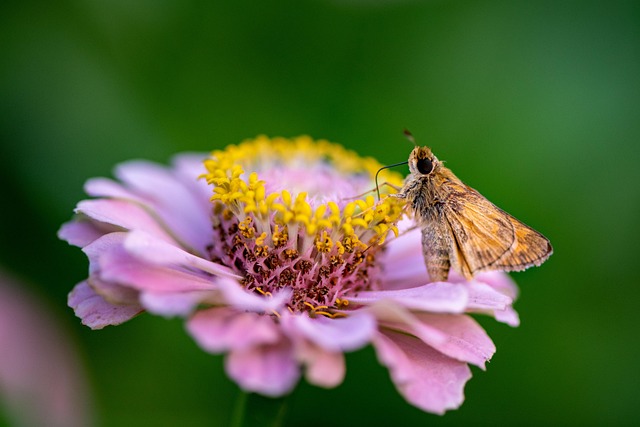Boxelder bugs, identified by their black and red stripes, primarily inhabit areas near boxelder trees, clustering in cool, shady spots during fall for winter shelter. Their life cycle involves eggs, nymphs, and adults, crucial for understanding and managing populations through targeted interventions. Climate factors, human activities, and habitat alterations influence their distribution, with residential areas providing ideal conditions. Effective residential boxelder bug treatment requires a multi-step approach combining sealing entry points, non-chemical methods, and chemical treatments targeting all life stages, along with regular maintenance.
Understanding the boxelder bug life cycle is key to effective management of these pesky insects. This article guides you through every stage, from identifying boxelder bugs and their preferred habitats to exploring the complete life cycle—eggs to adults. We delve into factors influencing their populations and offer a range of residential boxelder bug treatment options and best practices to ensure your home remains bug-free.
Identifying Boxelder Bugs and Their Habitat
Boxelder bugs, scientifically known as Boisea trivittatis, are small insects that can be easily identified by their distinctive black and red stripes. Adult bugs measure about ½ inch in length, with flat bodies and long antennae. They are most commonly found in residential areas where their primary host plant, the boxelder tree (Acer negundo), is present. These bugs prefer cool, shady spots and are often seen clustering on walls, under eaves, or near windows during the fall when they seek shelter for the winter months.
Identifying boxelder bugs early is crucial for effective residential boxelder bug treatment. As pests, they can cause minor damage to property by feeding on tree sap and leaving behind a sticky substance known as honeydew, which encourages mold growth. Understanding their life cycle—including eggs, nymphs, and adults—is essential for managing populations through targeted interventions tailored to each stage.
The Boxelder Bug Life Cycle: Eggs to Adults
The Boxelder Bug’s life cycle is a fascinating yet complex process that spans several stages, from egg to adult. This insect goes through distinct transformations, each crucial for its survival and reproduction. The cycle begins when adult female boxelder bugs lay eggs on suitable hosts, typically boxelder trees or other woody plants. These eggs hatch into tiny nymphs after about 7-10 days, depending on the temperature.
Nymphs undergo several molts as they grow, sheding their exoskeletons to accommodate their increasing size. This process can take several weeks, during which they feed on plant sap and develop into mature adults. Once fully grown, adult boxelder bugs emerge from their hosts, seeking new sources of food and mates. Understanding this life cycle is key for effective residential boxelder bug treatment strategies.
Factors Influencing Boxelder Bug Populations
Various factors play a significant role in shaping boxelder bug populations, impacting their behavior and distribution. Climate conditions, particularly temperature and rainfall patterns, heavily influence their life cycle and migration. Warmer temperatures stimulate their activity and reproduction, while cold weather drives them to seek shelter. Adequate moisture is essential for their survival, especially during the egg and nymphal stages. Residential areas with boxelder trees provide ideal habitats, as these trees serve as both food sources and shelters.
Human activities also contribute to population dynamics. Landscaping practices, such as tree removal or chemical treatments, can disrupt their natural cycle. Pesticide applications for residential boxelder bug treatment must be carefully considered, as they may have unintended effects on non-target species and the overall ecosystem. Additionally, changes in urban development, including new construction and altered green spaces, can affect bug distribution and behavior, highlighting the importance of integrated pest management approaches that balance effective control with environmental sustainability.
Residential Boxelder Bug Treatment Options and Best Practices
When it comes to managing a residential boxelder bug infestation, there are several effective treatment options available. The first step is identifying the source and extent of the problem, as these bugs are attracted to areas with plenty of sunlight and warm temperatures. Sealing entry points, such as cracks and gaps in windows and doors, can prevent their return.
For existing infestations, a combination of non-chemical and chemical treatments is often most successful. Non-chemical methods include vacuuming up the bugs and using insect light traps to reduce their population. Chemical options range from spot treatments with insecticides to broader applications, ensuring that all stages of the boxelder bug life cycle are targeted. Regular maintenance and monitoring are key; treating at the right time of year and addressing any new infestations promptly helps keep populations under control.
Understanding the boxelder bug life cycle is key to effectively managing populations. By recognizing their habitat, knowing how they develop from eggs to adults, and identifying factors that influence their numbers, homeowners can make informed decisions regarding residential boxelder bug treatment. Adhering to best practices ensures a successful and sustainable approach to controlling these insects, providing relief for folks dealing with infestations.
